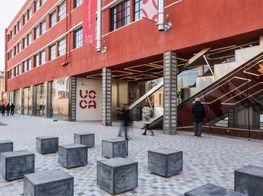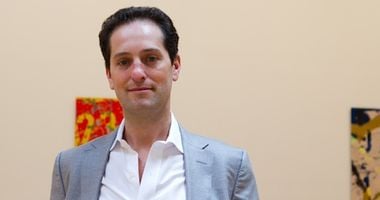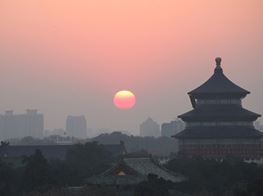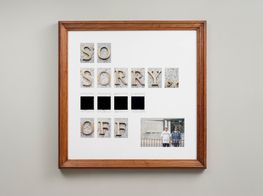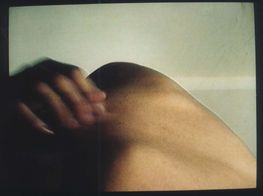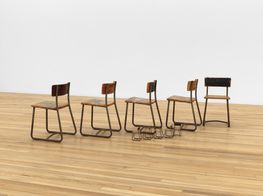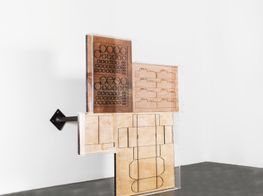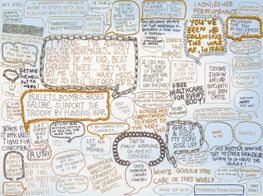Philip Tinari
Philip Tinari.
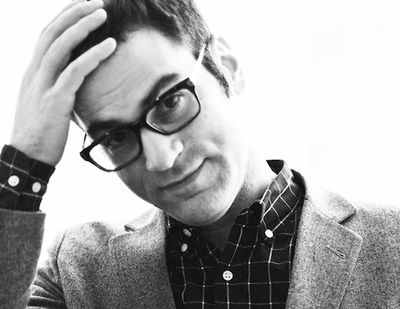
Philip Tinari.
Philip Tinari, the man Xu Zhen has described as 'China's son-in-law', really needs no introduction. The Director of the Ullens Center for Contemporary Art (UCCA), an independent museum in Beijing's 798 Art District with over half a million visitors a year.
He is also the founding editor of LEAP, a contributing editor to Artforum, and adjunct professor in the College of Humanities at the Central Academy of Fine Arts, Beijing. Since joining UCCA, Tinari has curated exhibitions and projects with artists including Gu Dexin, Yun-Fei Ji, Kan Xuan, Yung-Ho Chang and, more recently, Xu Zhen.
In this interview, Tinari discusses his curatorial project for the Focus section at the 2014 Armory Show in New York, which this year directs a spotlight on China.
I think the most important thing to remember is that curating a section of an art fair is very different to curating a museum show. For one thing, at a fair, you have this particular context, which is actually quite useful, because I'm not only presenting artists but also galleries.
SBHow did you come to curate this year's Focus at The Armory?
PTThe Focus section has really become one of the things about The Armory that people look forward to the most. It has become slightly more ambitious each year—last year's exploration by Eric Shiner of young American artists to mark the centennial of The Armory Show, from which the fair takes its name, was really talked about. It made sense to start looking farther away, and of course China has been on everyone's mind. The Armory Show's Executive Director Noah Horowitz approached me, and we met first in Hong Kong and then in Venice to talk about ideas, and I've been working on the curatorial more or less since July 2013.
SBCan you talk about the galleries you have invited and the thinking behind the selection?
PTThere were two goals when thinking this through. One was to present a compelling group of artists. So, of the booths, about half of them are solo presentations of younger artists, and the other half are group presentations pegged to different historical moments and that show artists from older generations. I wanted the curatorial to be nuanced, to steer clear of obvious Chinese symbols and avoid that list of five names everyone already knows.
SBAnd can you talk about the artists that are being presented?
PTOn the younger end, we have the Double Fly Collective, which is a group of nine artists from Hangzhou who were all students of Zhang Peili at the academy there, and who I call the Bruce High Quality Foundation of China. Theirs will be an entertaining booth: They are turning it into a carnival game, and distributing lottery tickets to all fairgoers!
Then you have somebody like Liang Shuo, an emerging sculptor, trained in Holland and a very solid artist who, for whatever reason, isn't as known as he should be at this point in his career. He has recently started working with Gallery Yang, who is bringing his work to the fair. Lu Pingyuan is another young artist who was part of a short-lived but well known collective called Guest, who is showing with Madein Gallery, which was opened by Xu Zhen and Madein Company, who is also doing the Armory commission this year.
Zhao Yao is another member of Guest who is showing geometric abstraction with Beijing Commune. Li Shurui is showing a suite of paintings at Aike-Dellarco, based on her memories of being at the Armory back in 2006 when she worked for one of the galleries when she was just getting started in Beijing. Then you have someone like He Xiangyu, showing at White Space, who just had a solo show at White Cube in Bermondsey, or Nadim Abbas from Hong Kong, who is coming with Gallery EXIT, with a new project. In all, it's a really diverse presentation.
SBHow did you approach the question of presenting a region in a curated section of an art fair?
PTI think the most important thing to remember is that curating a section of an art fair is very different to curating a museum show. For one thing, at a fair, you have this particular context, which is actually quite useful, because I'm not only presenting artists but also galleries. Nine out of the seventeen galleries represented have never shown outside of Asia. The lingering perception in New York is that the Chinese art world is defined by censorship and speculation. On the contrary I wanted to show that, apart from these two more disturbing trends, a really organic scene has emerged intensively over the last five years. What you see on the ground in China now is this functioning ecology.
SBWhat was it like working with the art fair format as opposed to the museum format when it came to conceptualising this curatorial?
PTOne of the great things about the art fair format is that it has the potential to be extremely timely, because we are showing new work produced with that heated rhythm of production for the international calendar of art fairs. For me, it was interesting to harness this as a way to present a glimpse into a scene that is actually more dynamic than the view you would get in a museum show, which would take a few years to plan. Also, you can take advantage of the fact that the galleries and artists are there on-site to explain the work. This has the potential to create connections that might produce new collaborations and ideas down the road.
SBCould you expand on what you said about how, in the last five years, there has been a maturation in China's art scene?
PTThe big trend in the last five years has been a turn inward, as there are now more and more institutions, market possibilities, and media inside the country. So, artists can sustain a career without really looking so far beyond. This in part was what LEAP magazine was about and why I started it—there was this urgent sense of two diverging paths. If you looked through an auction catalogue you saw one reality: a completely different set of artists that institutions in the outside world wanted to work with. You had these two art worlds that were not talking to each other anymore and LEAP was about putting these worlds together on the same page, literally, so as to create a kind of Beijing-modulated articulation of things that was also global.
One of the great things about the art fair format is that it has the potential to be extremely timely, because we are showing new work produced with that heated rhythm of production for the international calendar of art fairs. For me, it was interesting to harness this as a way to present a glimpse into a scene that is actually more dynamic than the view you would get in a museum show, which would take a few years to plan.
I think after 2008, any lingering reliance on western collectors for one's big break has disappeared. All the big players in that sense, post-2008, were now suddenly either domestic or elsewhere in the region, and that kind of neutralised one of the big dynamics affecting the scene. For years, it seemed all this Chinese art was being made for foreigners, which was a big critique for the intellectuals in China, as if this kind of production was a symptom of residual, semi-colonial subjectivity. But these days, this argument doesn't come up anymore because there is a whole system in place in China. Today, people are excited to go to New York and expand their horizons; to show to a new audience. A lot of these are young galleries that are just reaching a critical point in their development and a lot of these artists are quite young. And yet they are coming to New York not with a longing for approval but with an excitement about new possibilities.
SBAnd with a more nuanced expression of its contemporary art scene...
PTYes, because again, this curatorial is not just one person's view. It's my prismatic selection, of course, but this is not an essay or a thesis. —[O]

